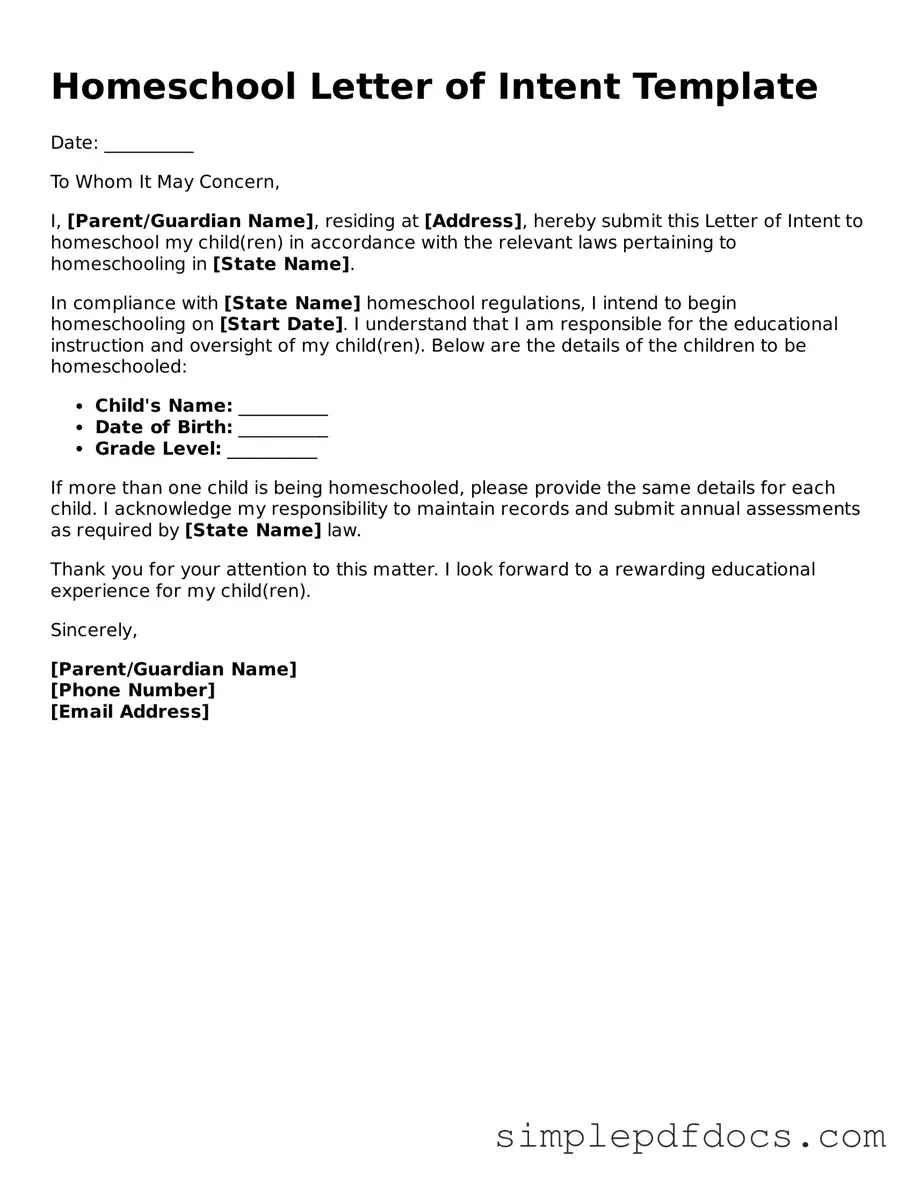Attorney-Approved Homeschool Letter of Intent Form
The Homeschool Letter of Intent is a formal document submitted to local education authorities to notify them of a parent's decision to educate their child at home. This letter serves as an official declaration of intent, ensuring compliance with state regulations regarding homeschooling. Understanding its importance and requirements is essential for families embarking on this educational journey.
Get Document Here
